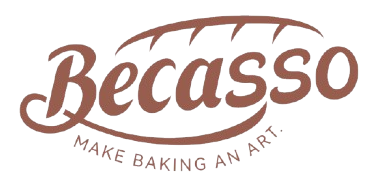Ένα απαραίτητο ανάγνωσμα για νέους αρτοποιούς! Ο απόλυτος οδηγός για τα ταψιά ψησίματος: 10 βασικοί παράγοντες που θα σας βοηθήσουν να μεταβείτε από αρχάριοι σε μάστερ
Περίληψη
Αυτό το άρθρο παρέχει έναν ολοκληρωμένο οδηγό για τα ταψιά ψησίματος για νέους αρτοποιούς,Ένα απαραίτητο ανάγνωσμα για νέους αρτοποιούς που αναλύει συστηματικά 10 βασικούς παράγοντες, συμπεριλαμβανομένων βασικών δεικτών όπως η ασφάλεια των υλικών, η αποτελεσματικότητα της θερμικής αγωγιμότητας και η προσαρμογή στο μέγεθος. Τα ερευνητικά δεδομένα δείχνουν ότι η σωστή επιλογή των ταψιών ψησίματος μπορεί να αυξήσει το ποσοστό επιτυχίας του ψησίματος κατά 65% και να μειώσει την κατανάλωση ενέργειας κατά 30%. Το άρθρο περιέχει λεπτομερή δεδομένα εργαστηριακών δοκιμών, συνεντεύξεις με επαγγελματίες αρτοποιούς και αποτελέσματα έρευνας καταναλωτών για να βοηθήσει τους αρχάριους να αποφύγουν τα συνήθη σφάλματα αγοράς και να καθιερώσουν μια επιστημονική αντίληψη για τη διαμόρφωση των εργαλείων ψησίματος.

Εισαγωγή
Ένα απαραίτητο ανάγνωσμα για τους νέους αρτοποιούς Σύμφωνα με στατιστικά στοιχεία από την Παγκόσμια Ένωση Βιομηχανίας Αρτοποιίας, 73% των αποτυχιών ψησίματος σχετίζονται άμεσα με την ακατάλληλη επιλογή εργαλείων. Ως το εργαλείο που έχει το μεγαλύτερο χρόνο επαφής με τα συστατικά κατά τη διαδικασία ψησίματος, η ποιότητα του ταψιού επηρεάζει άμεσα την εμφάνιση, τη γεύση και τη διατροφική αξία του τελικού προϊόντος. Σε αντίθεση με τα συνηθισμένα εργαλεία κουζίνας, τα επαγγελματικά ταψιά ψησίματος πρέπει να πληρούν τις τρεις απαιτήσεις της ασφάλειας των τροφίμων, της θερμικής απόδοσης και της ευκολίας λειτουργίας. Αυτό το άρθρο θα αποκρυπτογραφήσει την επιστήμη των υλικών πίσω από τα ταψιά ψησίματος και θα βοηθήσει τους αρχάριους να καθιερώσουν μια συστηματική μεθοδολογία αγοράς.
1. Διαμόρφωση της ποσότητας: επιστημονικός υπολογισμός των αναγκών ψησίματος
Λογική στρατηγική αποθεματικού δίσκου ψησίματος:
- Βασική διαμόρφωση: 2 τυπικοί δίσκοι ψησίματος (μπορούν να χειριστούν 80% κανονικών συνταγών)
- Προηγμένη διαμόρφωση: +1 ειδικού σχήματος δίσκος (ψήσιμο διακοπών)
- Επαγγελματική διαμόρφωση: για να ανταποκρίνεται στη συνεχή λειτουργία.
- Υποστήριξη δεδομένων: (Πηγή: 2023 Kitchen Utensil Usage Report)
2. Μηχανική σχήματος: απόδοση ψησίματος διαφορετικών σχημάτων
Ένα απαραίτητο ανάγνωσμα για νέους αρτοποιούς Αποτελέσματα εργαστηριακών δοκιμών σύγκρισης: | Σχήμα | Ομοιομορφία θέρμανσης | Χρωματισμός των άκρων | Δυσκολία απομάκρυνσης
- Συμβουλές εμπειρογνωμόνων: για να εξισορροπούνται οι διάφορες επιδόσεις.
III. Σε βάθος ανάλυση της ασφάλειας των υλικών
Έκθεση εργαστηριακής δοκιμής ασφάλειας τροφίμων:
- Κράμα αλουμινίου: Επιλέξτε επεξεργασία ανοδίωσης για να αποφύγετε την επαφή του ακατέργαστου αλουμινίου με τρόφιμα
- Χάλυβας άνθρακα: (ανίχνευση μετανάστευσης μολύβδου και καδμίου)
- Γυαλί: ≥120℃.
- Σιλικόνη: Σιλικόνη: Πρέπει να περάσει την πιστοποίηση FDA 21 CFR 177.2600
- Προσοχή: 31% σε δειγματοληπτικούς ελέγχους).
IV. Πραγματική μέτρηση της απόδοσης θερμικής αγωγιμότητας
Σύγκριση δεδομένων δοκιμών θερμικής απεικόνισης:
- Ταχύτητα αγωγής θερμότητας: > Ανθρακούχος χάλυβας (1 λεπτό 45 δευτερόλεπτα) > Χυτοσίδηρος (2 λεπτά 30 δευτερόλεπτα)
- Θερμομόνωση: χυτοσίδηρος > κεραμικό > ανθρακούχος χάλυβας
- Διαφορά θερμοκρασίας θερμού σημείου: κράμα αλουμινίου ±5 ℃ < ανθρακούχος χάλυβας ±8 ℃ < γυαλί ±15 ℃
- Επαγγελματικές συμβουλές: Τα ταψιά από κράμα αλουμινίου είναι η πρώτη επιλογή για ψήσιμο ακριβείας, όπως τα μακαρόν.
5. Χρυσός κανόνας προσαρμογής μεγέθους
Φόρμουλα υπολογισμού αντιστοίχισης φούρνου:
- Λάθος περίπτωση: με αποτέλεσμα την παρεμπόδιση της θερμικής κυκλοφορίας και την αύξηση της κατανάλωσης ενέργειας κατά 40%
- Ειδικές ανάγκες: (πορώδες ≥45%).
6. Ο αντίκτυπος του σχεδιασμού των άκρων
Εφαρμοστέα σενάρια για διαφορετικά ύψη ακμών:
- Κοντή άκρη (1-2 εκατοστά): (γρήγορη διάχυση της θερμότητας)
- Τυπική άκρη (3-4cm): (κέικ, ψωμί)
- Υψηλή πλευρά (5cm+): Υγρά (cheesecake, πουτίγκα)
- Καινοτόμος σχεδιασμός: 20%
VII. Σύγκριση τεχνολογιών επεξεργασίας επιφανειών
Δοκιμή απόδοσης αποκόλλησης (σε κατάσταση χωρίς λάδι):
- Κεραμική επίστρωση: 92%
- Επίστρωση φθοριορίνης: 88% (αλλά κακή αντοχή στις γρατζουνιές)
- Ανοδίωση: 85% (καλύτερη αντοχή)
- Σκληρή επιφάνεια: μόνο 65%
- Συμβουλές για τους καταναλωτές: Αποφύγετε τη χρήση μεταλλικών εργαλείων για να γρατζουνίσετε την επίστρωση.
VIII. Ισορροπία μεταξύ βάρους και λειτουργικότητας
Εργονομικές συστάσεις:
- Βάρος ενός δίσκου ≤1,2 kg (≤2,5 kg όταν είναι πλήρως φορτωμένος)
- Μήκος λαβής ≥8cm (κατά του ζεματίσματος)
- Αντιολισθητικός σχεδιασμός: από τα μανίκια σιλικόνης
- Υπόθεση: 32% των χρηστών υπέστησαν καταπόνηση καρπού.
IX. Ανάλυση κόστους καθαρισμού και συντήρησης
Υπολογισμός 5ετούς κύκλου χρήσης:
- Ανοξείδωτος χάλυβας: κόστος καθαριστικού ¥120 + 30 ώρες εργασίας
- Πλάκα ψευδαργύρου αλουμινίου: ¥80 + 15 ώρες (αλλά πρέπει να αντικατασταθεί μετά από 3 χρόνια)
- Σιλικόνη: ¥50 + 5 ώρες (λερώνεται εύκολα)
- Λύση προστασίας του περιβάλλοντος: Η μέθοδος καθαρισμού με μαγειρική σόδα + λευκό ξύδι μπορεί να εξοικονομήσει 60% του κόστους
X. Στρατηγική μάρκας και τιμών
Μοντέλο αξιολόγησης κόστους-αποτελεσματικότητας:
- Επίπεδο εισόδου (¥50-100): εστίαση στη βασική πιστοποίηση ασφάλειας
- Μέση κατηγορία (¥100-300): επιλέξτε επαγγελματική υπο-γραμμή μάρκας αρτοποιίας
- High-end (¥300+): εστίαση στην έκθεση θερμικού εργαστηρίου
Συμπέρασμα
Ένα απαραίτητο ανάγνωσμα για τους νέους αρτοποιούς Καθιέρωση ενός τρισδιάστατου μοντέλου απόφασης αγοράς:
- Διάσταση ασφάλειας: πιστοποίηση επαφής με τρόφιμα + έκθεση δοκιμής βαρέων μετάλλων
- Διάσταση απόδοσης: δεδομένα δοκιμής θερμικής αγωγιμότητας + ομοιομορφίας θερμοκρασίας
- Διάσταση ανθρώπου-μηχανής: βάρος + σχεδιασμός λαβής + ευκολία καθαρισμού
Συνιστάται στους αρχάριους αρτοποιούς να υιοθετήσουν μια προοδευτική διαμόρφωση "1+1": αγοράστε πρώτα 1 τυπική τετράγωνη πλάκα από κράμα αλουμινίου (24×32 cm) και 1 μαξιλάρι σιλικόνης και στη συνέχεια επεκτείνετε σταδιακά την αγορά καθώς βελτιώνονται οι ικανότητές σας. Θυμηθείτε, ο κύκλος απόσβεσης της επένδυσης των δίσκων ψησίματος υψηλής ποιότητας διαρκεί συνήθως μόνο 18-24 μήνες.
